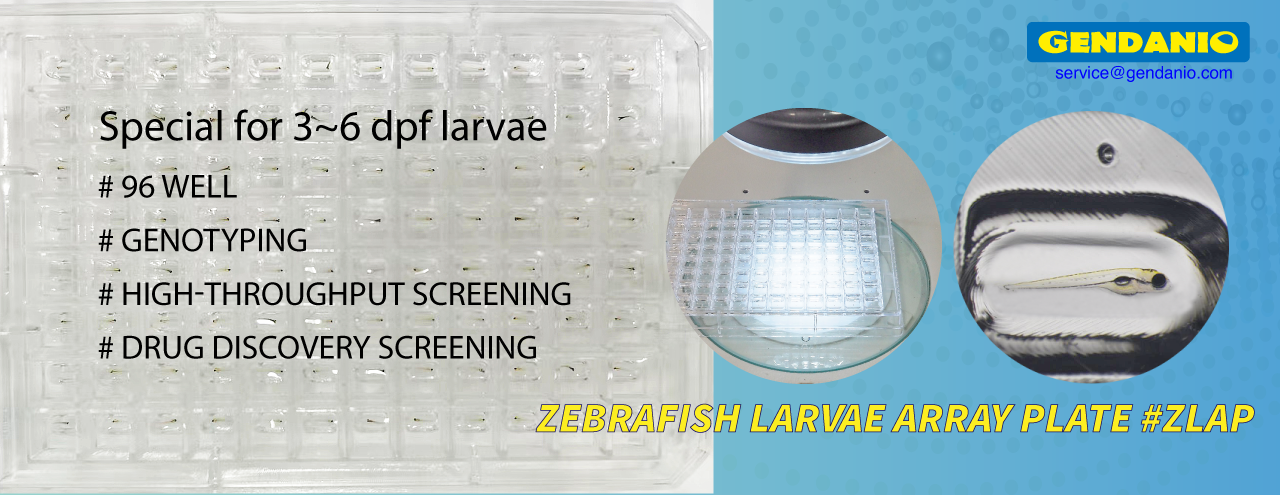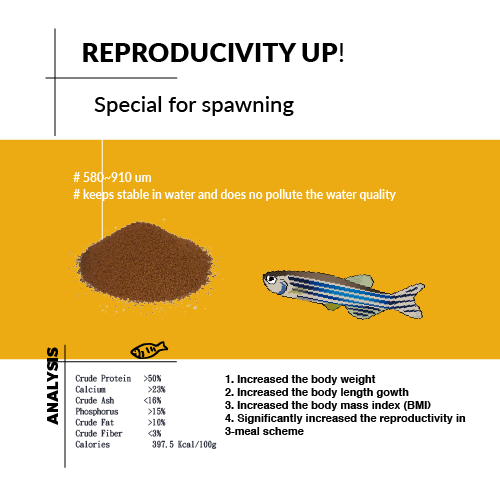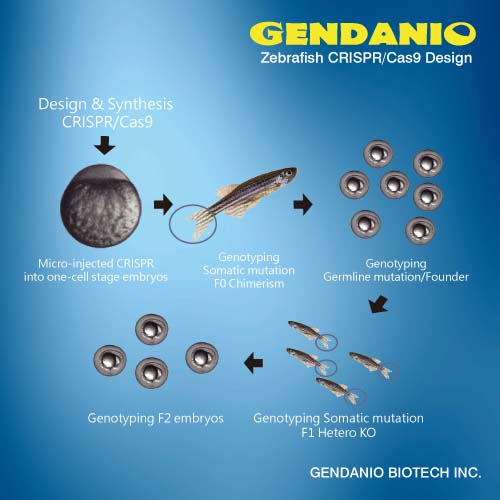CALGARY, ALBERTA--(Marketwire - Sept. 1, 2011) - University of Calgary researchers got a boost from one of the country's top funding bodies today. The Canada Foundation for Innovation (CFI) announced $1.8 million in funding for nine research projects, including a project in the Faculty of Medicine that studies the genetic basis for disease using fish as experimental models.
"Our government is investing in science and technology to create jobs, improve the quality of life of Canadians and strengthen the economy," said Lee Richardson, Member of Parliament for Calgary Centre who made the announcement at University of Calgary. "This investment will make sure that our scientists have the tools they need to be successful, and help Canada develop, attract and retain the world's best researchers."
Scientists at the Faculty of Medicine find tiny zebrafish pack a powerful genetic punch. They are using the fish to learn more about how neurons in the hypothalamic region of the brain develop and organize.
Project leader Deborah Kurrasch, PhD, an assistant professor in the Department of Medical Genetics, says using zebrafish to identify the genes important for hypothalamic development and function has the potential to shed insight into human conditions such as appetite or sleep disorders, as well as hypothalamic-pituitary diseases, such as hyper- or hypothyroidism.
"Zebrafish are an excellent model system to study the genetic basis of human disease because we can conduct genetic screens that reveal mutants based on phenotype, thereby often providing a unique entry-point into identifying and characterizing genes critical to biology," says Kurrasch, a member of the Alberta Children's Hospital Research Institute for Child and Maternal Health. Sarah Childs, PhD is a co-applicant on the funding.
"Dr. Kurrasch and the other recipients of this funding highlight the first-class research and very important problems being tackled by scientists at our institution," says Edward McCauley, vice president of research at the University of Calgary. "We are very proud of the innovative research being done at University of Calgary and appreciate the important support we receive through our partnership with CFI."
Today's announcement was part of a total of $53.3 million to support 207 projects at 42 institutions across Canada through the CFI's Leaders Opportunity Fund. The Leaders Opportunity Fund program is designed to help attract and retain top researchers.
"CFI investments provide vital infrastructure in communities across the country and create opportunities for leveraging the work being undertaken by our enterprising researchers," said Gilles G. Patry, CFI president and CEO. "Cutting-edge research facilities are magnets that attract the best talent from around the world, allowing them to work with business and train a new generation of Canadian researchers and innovators."
Looking for a U of C expert for a story? Try our Experts Online: www.ucalgary.ca/experts
Stay up to date with University of Calgary news headlines on Twitter @UCalgary
University Relations:
Backgrounder
University of Calgary projects receiving Canada Foundation for Innovation, Leaders Opportunity Fund support:
Human Behaviour and Decisions Laboratory – Haskayne School of Business
Piers Steel received $121,415 for his laboratory that will allow for research on human behaviour and decision-making, and will provide students and interested scholars with hands-on experience. Researchers will study the underlying reasons behind, and motivations of, people's decisions and actions and how these influence relevant contemporary issues ranging from individual consumer behaviour to broader social policies. The lab will facilitate cross-disciplinary collaboration among business and related areas, such as marketing, finance, operations management, human resources, and strategic management.
Microscopy Tools for the Study of Uterine Smooth Muscle Function in Human Pre-Term Labour – Faculty of Medicine
Donna Slater, PhD received $109,994 for her research project to understand the underlying mechanisms controlling the onset of human labour and to enhance prediction and treatment. Equipment will be purchased to study the mechanisms that regulate the contraction and relaxation of the smooth muscle cells of the uterus. Collaborators are Dr. Don Welsh and Dr. Justin MacDonald.
Infrastructure Resources and Microscopy Tools for the study of Zebrafish Genetics – Faculty of Medicine
Project leader Deborah Kurrasch, PhD and co-applicant Sarah Childs, PhD received $281,719 to expand their zebrafish vivarium. Kurrasch and Childs use zebrafish to identify the genes important for hypothalamic development and function which has the potential to shed insight into human conditions such as appetite or sleep disorders, as well as hypothalamic-pituitary diseases, such as hyper- or hypothyroidism. They have also requested a scanning confocal microscope that will support time lapse and high-resolution microscopy to enable detailed examination of mutant animals.
Unsteady Fluid Mechanics Laboratory – Schulich School of Engineering
David Rival, David Wood and Robert Martinuzzi received $119,872 and will operate a new laboratory to further the development of renewable energy technologies such as solar, wind and hydroelectric power. Their research will help develop new run-of-the-river hydroelectric designs, study the effects of wind loads on solar photovoltaic panels and analyze wind speeds to help develop small-scale wind turbines so homeowners can generate their own electricity. The new Energy, Environment and Experiential will house the lab, which will be equipped with a custom water tunnel, two wind tunnels and a separate optics room for the calibration of sensitive instrumentation.
Active Traffic Management Research Laboratory – Schulich School of Engineering
Lina Kattan, an expert in transportation systems optimization, received $258,159 for the Active Traffic Management Research Laboratory. Kattan's work involves developing and testing intelligent transportation systems, which are high-tech solutions for traffic management. They include sensors that influence traffic signals at intersections and ramp metering on busy freeways to regulate traffic flow.
Environmental impacts on freshwater fish−Department of Biological Sciences, Faculty of Science
Sean Rogers', PhD, received $229,854 for his research focusing on a variety of freshwater fish. Rogers' work aims to understand how rapid environmental changes, among other human induced changes to the environment, can be powerful agents of evolutionary change. He seeks to predict how organisms will respond, at the genetic level, to such changes. The funding from CFI will allow Rogers to equip his lab with testing and other equipment that will give him the ability to measure and analyze genetic variation in a controlled aquatic environment.
Increasing computer speed and efficiency- Department of Physics and Astronomy, Faculty of Science
Paul Barclay, PhD, received $290,058 for his research into making computers faster and more energy efficient. He wants to explore the quantum behaviour of nanoscale materials. The CFI project will build on Barclay's work at Hewlett Packard creating nodes for quantum networks from impurities in diamond nanostructures. It will use the quantum properties of light for computing and information processing in a way which generates much less heat, and uses far less power than the metals connectors found in today's computer hardware. Barclay also plans to use this technology to measure and control tiny mechanical vibrations whose properties will shed light on their environment and the quantum nature of matter.
Fluid-Flow Characterization of unconventional Reservoirs- Department of Geoscience, Faculty of Science
Chris Clarkson, PhD received $126,422 for his research of unconventional reservoirs which have become an important source of hydrocarbon supply in Canada. The research by Clarkson and his collaborators is of critical importance for improving production and recovery of hydrocarbons, such as natural gas, from Canada's unconventional reservoirs, as well as evaluating these reservoirs for CO2 sequestration potential. The infrastructure funding will assist Clarkson in assembling a suite of instruments and further develop methodologies to advance basic understanding of unconventional reservoirs.
Adult stem cell behavior regulation – Dept of Comparative Biology and Experimental Medicine, Faculty of Veterinary Medicine
Jeffrey Biernaskie PhD received $294, 649 for his research of how adult stem cell behavior (proliferation, differentiation) is regulated by their microenvironment or "niche", with the ultimate goal of developing treatments for skin regeneration and repair. One of his team's primary objectives is to develop improved treatment for burns and chronic skin wounds that can improve quality of life for both humans and animals. The CFI funding will support high-resolution imaging, as well as a Fluorescence Activated Cell Sorting System that will allow his lab to identify and isolate stem cells from rodent and human skin samples. It will also enable researchers to study the molecular signals that regulate stem cell behavior during regeneration and wound healing.
The Canada Foundation for Innovation was established by the Government of Canada in 1997 to build the country's capacity to undertake world-class research and technology development to benefit Canadians through investments in state-of-the-art facilities and equipment in universities.
Source: www.marketwire.com
























